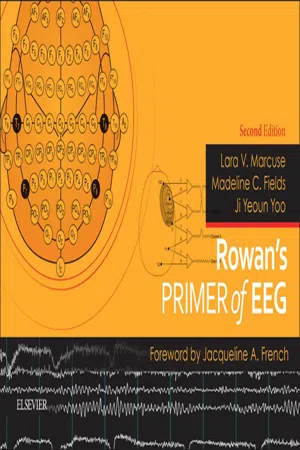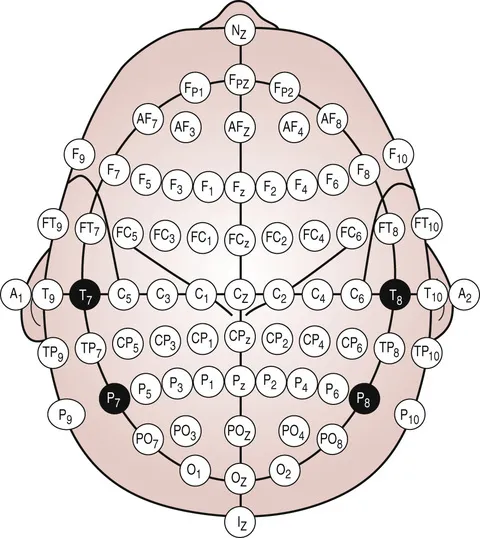
Rowan's Primer of EEG E-Book
- 208 pages
- English
- ePUB (mobile friendly)
- Available on iOS & Android
Rowan's Primer of EEG E-Book
About this book
The new edition of Rowan's Primer of EEG continues to provide clear, concise guidance on the difficult technical aspects of how to perform and interpret EEGs. Practical yet brief, it is perfectly suited for students, residents, and neurologists alike, while included reference material will be continually useful, even to the experienced doctor.- Features brief, to-the-point text with easily understandable language for quick reference.- Portable design makes it simple to carry anywhere.- Expert Consult eBook version included with purchase. This enhanced eBook experience allows you to search all of the text, figures, self-assessment questions, images, and references from the book on a variety of devices.- Concise, reader-friendly format features improved 4-color design and online quiz-format assessment questions within each chapter.- Includes the new nomenclature for EEGs put forth by the American Clinical Neurophysiology Society.- Features a greater focus on pediatrics content and includes online videos detailing clinical descriptions of seizures and EEG interpretation.- Delivers a concise chart of the EEG changes through the neonatal period.- Offers enhanced coverage of epilepsy syndromes with a quick-access chart highlighting age of onset, prognosis, clinical characteristics, and EEG characteristics.
Frequently asked questions
- Essential is ideal for learners and professionals who enjoy exploring a wide range of subjects. Access the Essential Library with 800,000+ trusted titles and best-sellers across business, personal growth, and the humanities. Includes unlimited reading time and Standard Read Aloud voice.
- Complete: Perfect for advanced learners and researchers needing full, unrestricted access. Unlock 1.4M+ books across hundreds of subjects, including academic and specialized titles. The Complete Plan also includes advanced features like Premium Read Aloud and Research Assistant.
Please note we cannot support devices running on iOS 13 and Android 7 or earlier. Learn more about using the app.
Origin and technical aspects of the EEG
Origin of the EEG
Technical Considerations
Electrodes
Electrode Placement


Table of contents
- Cover image
- Title page
- Table of Contents
- Copyright
- Foreword
- Dedication
- Preface to the second edition
- 1 Origin and technical aspects of the EEG
- 2 The normal adult EEG
- 3 The normal EEG from neonates to adolescents
- 4 The abnormal EEG
- 5 The EEG and epilepsy
- 6 The EEG in other neurological and medical conditions and in status epilepticus
- 7 The EEG: Tips on indications, reading, and reporting
- Appendix 1 Influence of common drugs on the EEG and on seizure threshold
- Appendix 2 Treatment of Status Epilepticus
- Glossary
- Index
- Questions
- Answers